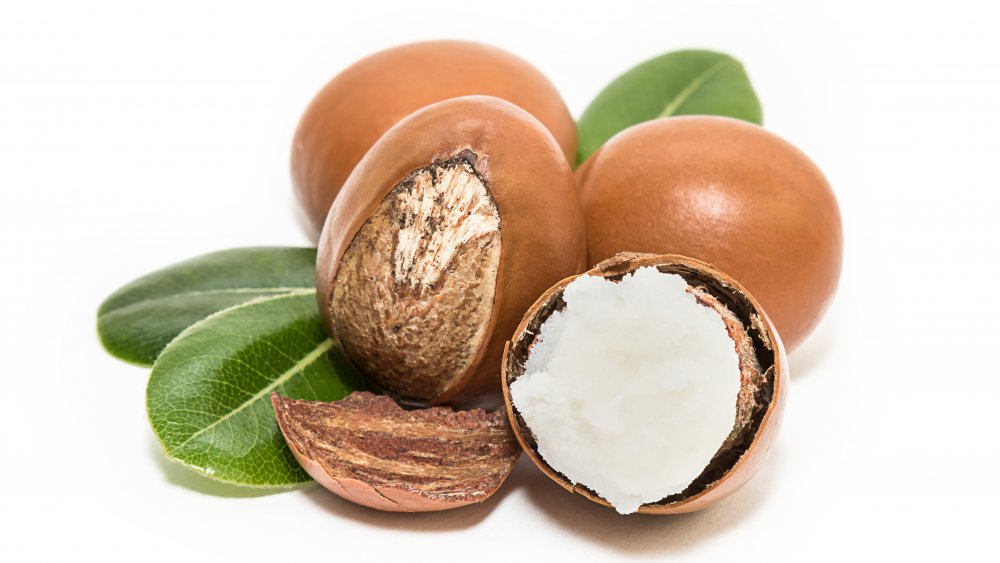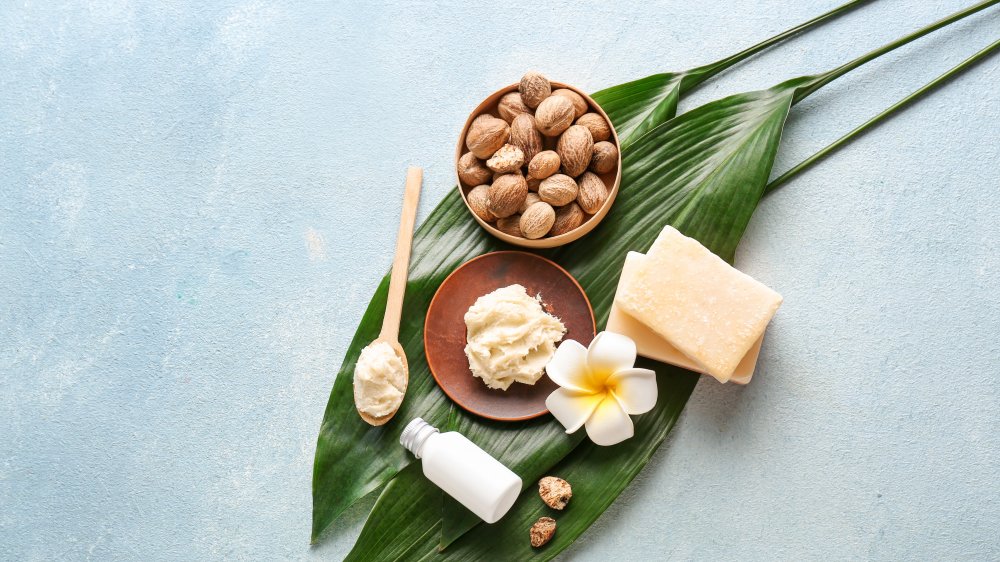What Is Shea Butter Made From?
If you're into skincare at all there's a good chance you've encountered shea butter. Maybe you stopped into a shop and asked the associate to help you find something to help with dry skin. Hopefully, they pointed you toward this incredible product, which is often mispronounced as "shay-uh" butter — it's "shay" if you didn't know (via YouGlish). The stuff is packed full of skin boosting benefits. Shea Yeleen notes that it helps to heal all sorts of skin issues including eczema, burns, rashes, stretch marks, and dry skin — but do you know what this seemingly magical butter actually is and where it comes from?
Shea butter comes from the shea tree that's native to East and West Africa, specifically in the more tropical regions. The butter is sourced from two different oily kernels within the seeds of the tree. Once these kernels are taken out of the seed, they are ground up into a powder and then boiled in water. This process transforms the substance into the form we are most familiar with (via WebMD).
Shea butter is a nut butter
Basically, the shea butter that we use is the fat that floats to the top as the water boils and becomes a more solid material. The beneficial butter is a solid at warmer temps than some other oils and has a tannish white color once it's processed.
Shea butter is sometimes called "women's gold" because women in 19 African Nations source their income via the Karite (or shea) tree. The trees can take up to 50 years to mature and produce, which makes the whole process difficult and expensive. Furthermore, the nuts are often harvested and processed by hand, making production incredibly labor intensive (via Better Shea Butter).
It's easy to be uninformed about the products we use everyday, but the more you know about what you're putting on your skin, the better. You can send your gratitude to the women who work hard to keep your skin looking beautiful and healthy.

